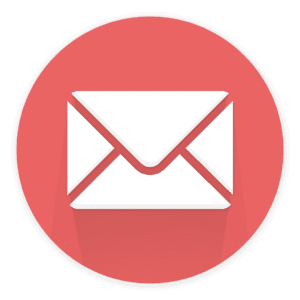In the competitive world of business brokerage, cold emails remain a powerful tool for lead generation. Business brokers who master the art of crafting compelling cold emails can significantly boost their chances of connecting with potential sellers and closing more deals. This guide delves into cutting-edge strategies that can help you elevate your cold email game and stand out in crowded inboxes.
Cold emails offer a direct line to decision-makers, bypassing gatekeepers and allowing business brokers to showcase their expertise. By leveraging personalized approaches and data-driven techniques, you can transform your cold outreach into a highly effective lead generation machine. Let’s explore how to craft messages that resonate with your target audience and drive meaningful conversations.
Key Takeaways
- Personalization is crucial for successful cold emails
- Segment your audience for targeted messaging
- Craft attention-grabbing subject lines
- Follow legal guidelines to ensure compliance
- Use analytics to measure and improve campaign performance
- Implement effective follow-up strategies
Understanding Cold Emailing Basics
Cold emailing forms a crucial part of modern business communication. For business brokers, it’s a powerful tool to reach potential clients and expand networks. Let’s explore the fundamentals of cold emails and their significance in the brokerage world.
What is Cold Emailing?
Cold emailing involves sending unsolicited emails to prospects with whom you’ve had no prior contact. It’s a digital approach to traditional cold calling, allowing business brokers to initiate conversations with potential buyers or sellers.
Importance in Business Brokerage
For business brokers, cold emails open doors to new opportunities. They help in:
- Identifying interested buyers for listed businesses
- Finding business owners ready to sell
- Building a robust network of contacts
- Establishing credibility in the industry
Ethical Considerations
While email outreach can be effective, it’s crucial to maintain ethical standards. Business brokers must:
| Do’s | Don’ts |
|---|---|
| Respect recipient’s privacy | Send spam or excessive emails |
| Provide value in each email | Use misleading subject lines |
| Include clear opt-out options | Ignore unsubscribe requests |
| Be transparent about intentions | Share recipient information without consent |
By understanding these basics, business brokers can harness the power of cold emails ethically and effectively, enhancing their outreach strategies and business growth.
Crafting Your Cold Email Template
Creating effective cold emails is crucial for lead generation and email outreach. A well-crafted template can significantly boost your success rate in business brokerage. Let’s explore the key elements that make a cold email template stand out.
Key Components of an Effective Email
A successful cold email includes a compelling subject line, a personalized greeting, and a concise body. The content should quickly convey value to the recipient. End with a clear call-to-action that guides the reader on next steps.
| Component | Purpose | Example |
|---|---|---|
| Subject Line | Grab attention | “Exclusive Business Opportunity in [Industry]” |
| Greeting | Personalize | “Hi [First Name],” |
| Body | Provide value | “I noticed your business growth in [Specific Area]…” |
| Call-to-Action | Drive response | “Would you be open to a 15-minute call this week?” |
Personalization Techniques
Personalization is key in cold emails. Research your prospects and tailor your message to their specific needs or interests. Mention recent company news or achievements to show you’ve done your homework.
Call to Action Strategies
Your call-to-action (CTA) should be clear and easy to respond to. Offer a specific next step, such as scheduling a call or requesting more information. Make it simple for the recipient to take action and continue the conversation.
“The best CTAs are specific, time-bound, and low-commitment. They invite a response without overwhelming the prospect.”
By focusing on these elements, you can create cold email templates that resonate with your targets and improve your lead generation efforts.
Segmenting Your Target Audience
Effective lead generation for business brokers starts with understanding your audience. By segmenting your target market, you can tailor your email outreach strategies for better results.
Identifying Ideal Clients
Business brokers should focus on finding clients who are ready to buy or sell. Look for companies in growth stages, industries with high merger activities, or business owners nearing retirement. Create a profile of your perfect client based on past successful deals.
Developing Buyer Personas
Craft detailed buyer personas to guide your email outreach. Consider factors like company size, industry, location, and decision-maker roles. This helps personalize your messages and increase engagement rates.
Effective List Building Practices
Build your email list thoughtfully. Use networking events, industry databases, and referrals to gather contacts. Always ensure you have permission to contact leads to comply with email regulations.
| Segmentation Criteria | Example | Email Outreach Strategy |
|---|---|---|
| Company Size | Small businesses (1-50 employees) | Focus on exit planning and valuation services |
| Industry | Technology startups | Highlight M&A trends in tech sector |
| Location | Midwest region | Emphasize local market knowledge |
| Business Stage | Mature businesses (10+ years) | Discuss succession planning options |
By segmenting your audience effectively, you’ll improve your lead generation efforts and create more targeted email campaigns. This approach helps business brokers connect with the right prospects and increase their chances of success in email outreach.
Writing Compelling Subject Lines
Crafting attention-grabbing subject lines is crucial for successful cold emails and email outreach campaigns. A well-written subject line can significantly boost open rates and improve lead generation efforts.
Techniques for Attention-Grabbing Subject Lines
To create compelling subject lines, focus on personalization, urgency, and curiosity. Use the recipient’s name or company, highlight time-sensitive offers, or pose intriguing questions. Keep subject lines concise, ideally under 50 characters, to ensure they display fully on mobile devices.
A/B Testing for Subject Lines
A/B testing helps optimize subject lines for better performance. Split your email list into two groups and send each a different subject line. Track open rates to determine which version performs better. Continuously refine your approach based on test results to improve your cold email campaigns.

Avoiding Spam Filters
To prevent your cold emails from landing in spam folders, avoid using excessive punctuation, all caps, or spam trigger words. Maintain a good sender reputation by regularly cleaning your email list and ensuring your content provides value to recipients.
| Do | Don’t |
|---|---|
| Use personalization | Overuse exclamation points |
| Create urgency | Write in ALL CAPS |
| Spark curiosity | Use spam trigger words |
| Keep it concise | Make false promises |
By implementing these strategies, you can enhance your email outreach efforts and improve your chances of connecting with potential clients through cold emails.
Timing Your Cold Emails
Timing is crucial for successful cold email campaigns in the business brokerage industry. Knowing when to send your emails can significantly boost open rates and responses. Let’s explore the best practices for timing your cold emails, managing follow-ups, and considering seasonal factors.
Best Times to Send Emails
Business brokers should aim to send cold emails when their prospects are most likely to check their inboxes. Tuesday through Thursday, between 10 AM and 2 PM, often yields the best results. Avoid Mondays when people are catching up from the weekend and Fridays when they’re wrapping up for the week.
Frequency of Follow-ups
Persistence is key in email outreach, but there’s a fine line between being persistent and annoying. A good rule of thumb is to send 3-5 follow-up emails over 2-3 weeks. Space them out every 3-4 days, gradually increasing the time between each follow-up.
Seasonal Considerations
Business cycles can impact the effectiveness of your cold emails. For instance, reaching out to business owners about selling during tax season might not be ideal. Consider targeting your email outreach during periods when businesses typically reassess their goals or plan for the future.
| Season | Opportunity for Business Brokers | Email Outreach Strategy |
|---|---|---|
| Spring | New financial year planning | Focus on growth opportunities and market trends |
| Summer | Mid-year reviews | Highlight success stories and valuation services |
| Fall | Year-end planning | Emphasize tax benefits of selling before year-end |
| Winter | New year, new goals | Present fresh start opportunities and market forecasts |
By carefully timing your cold emails, business brokers can improve their chances of connecting with potential clients and closing deals. Remember to continuously test and refine your email outreach strategies for optimal results.
Legal Considerations for Cold Emails
Business brokers using cold emails must navigate a complex legal landscape. Understanding and following regulations is crucial for successful email outreach campaigns. Let’s explore key legal aspects that impact cold emailing practices.
CAN-SPAM Act
The CAN-SPAM Act sets rules for commercial email messages. Business brokers must include a valid physical address, clear unsubscribe options, and honest subject lines in their cold emails. Violating these rules can lead to hefty fines, damaging your reputation and finances.
GDPR Compliance
For business brokers reaching out to European contacts, GDPR compliance is essential. This regulation requires explicit consent for data collection and processing. Ensure your email lists are obtained legally and recipients have agreed to receive marketing communications.
Consequences of Non-Compliance
Failing to follow email regulations can result in severe penalties. Fines, legal action, and damage to your business’s reputation are possible outcomes. To avoid these risks, always prioritize compliance in your cold email strategies.
| Regulation | Key Requirements | Potential Penalties |
|---|---|---|
| CAN-SPAM Act | Valid physical address, unsubscribe option, honest subject lines | Up to $43,792 per email |
| GDPR | Explicit consent, data protection measures | Up to €20 million or 4% of global turnover |
By adhering to these regulations, business brokers can conduct effective and compliant email outreach campaigns. Stay informed about legal updates to ensure your cold emailing practices remain within the bounds of the law.
Leveraging Tools for Cold Email Campaigns
Cold emails and lead generation strategies can be supercharged with the right tools. Business brokers can streamline their email outreach efforts and boost success rates by leveraging advanced technology. Let’s explore some essential tools that can elevate your cold email campaigns.
Email Automation Tools
Email automation platforms like Mailchimp or Sendinblue allow you to schedule and send personalized cold emails at scale. These tools offer features such as A/B testing, which helps optimize your email content for better open rates and responses. By automating your email outreach, you can focus on building relationships with potential clients.
CRM Systems for Tracking
Customer Relationship Management (CRM) systems are crucial for tracking your leads and managing client interactions. Platforms like Salesforce or HubSpot help you organize contact information, track communication history, and set reminders for follow-ups. This ensures no potential deal slips through the cracks in your lead generation process.
Analytics Tools for Performance Measurement
To refine your cold email strategy, you need to measure its effectiveness. Analytics tools provide insights into key metrics such as open rates, click-through rates, and conversion rates. Google Analytics can track website visits from your email campaigns, while specialized email analytics tools offer deeper insights into recipient behavior. By analyzing this data, you can continuously improve your email outreach and boost your success rate in closing deals.
“The right tools can transform your cold email campaigns from hit-or-miss to consistently effective, driving more leads and closing more deals.”
By integrating these tools into your workflow, you can create a powerful system for cold email campaigns that drives results and helps you stand out in the competitive business brokerage market.
Measuring the Success of Your Campaigns
For business brokers, tracking the performance of cold email campaigns is vital for lead generation success. By analyzing key metrics, you can refine your approach and boost your results.
Key Performance Indicators to Consider
Focus on these essential KPIs to gauge your cold email effectiveness:
- Open rate: Percentage of recipients who open your emails
- Click-through rate: Percentage of recipients who click on links
- Reply rate: Percentage of recipients who respond to your emails
- Conversion rate: Percentage of recipients who take desired actions

Analyzing Open and Response Rates
Open rates indicate the strength of your subject lines, while response rates reflect the quality of your email content. Compare these metrics against industry benchmarks to assess your performance.
| Metric | Average for Business Brokers | Top Performers |
|---|---|---|
| Open Rate | 20-25% | 30-35% |
| Response Rate | 5-10% | 15-20% |
Strategies for Continuous Improvement
To enhance your cold email campaigns:
- Segment your audience for targeted messaging
- Test different subject lines and email content
- Personalize emails based on recipient data
- Optimize send times for maximum engagement
By consistently analyzing and refining your cold email strategies, you can improve your lead generation efforts and grow your business brokerage practice.
Following Up Effectively
In the world of business brokerage, mastering the art of follow-up is crucial. Cold emails often serve as the initial point of contact, but it’s the follow-up that seals the deal. Let’s explore how business brokers can maximize their email outreach through effective follow-up strategies.
Importance of Follow-ups
Follow-up emails are game-changers in cold email campaigns. They remind prospects of your initial contact and show your commitment. For business brokers, persistent follow-ups can turn lukewarm leads into hot prospects.
Techniques for Effective Follow-Up Emails
Craft follow-up emails that add value. Reference your previous message and offer new insights or information. Use a friendly tone and keep your emails concise. Consider these techniques:
- Share relevant market trends or industry news
- Offer a free consultation or valuation
- Provide client testimonials or success stories
Timing Your Follow-Up
Timing is critical in follow-up emails. Send your first follow-up 3-4 days after the initial cold email. Space subsequent follow-ups 5-7 days apart. Be persistent but respectful – if there’s no response after 3-4 follow-ups, it’s time to move on.
“The fortune is in the follow-up. Most deals are closed not on the first contact, but on the follow-up.”
By mastering follow-up techniques, business brokers can significantly boost their email outreach success rates. Remember, persistence and value are key in turning cold leads into warm opportunities.
Case Studies of Successful Cold Email Campaigns
Let’s dive into real-world examples of cold email strategies that hit the mark for business brokers. These case studies show how smart lead generation can transform a broker’s business.
Real-world Examples of Effective Strategies
A New York-based business broker saw a 40% increase in responses by personalizing cold emails with recent company news. Another success story comes from a California firm that boosted open rates by 25% using catchy, value-focused subject lines. These wins prove that tailored content and attention-grabbing headlines work wonders in cold outreach.
Lessons Learned from Failed Campaigns
Not all cold email attempts succeed. One broker’s campaign flopped due to overly sales-y language. Another missed the mark by sending emails at off-peak hours. These missteps teach us the importance of value-first messaging and smart timing in cold email strategies for business brokers.
Key Takeaways for Business Brokers
The main lessons? Personalization matters. Craft emails that speak directly to your prospect’s needs. Timing is crucial – send when your leads are most likely to read. Lastly, always focus on providing value. By applying these insights, business brokers can create cold email campaigns that truly resonate and generate quality leads.






